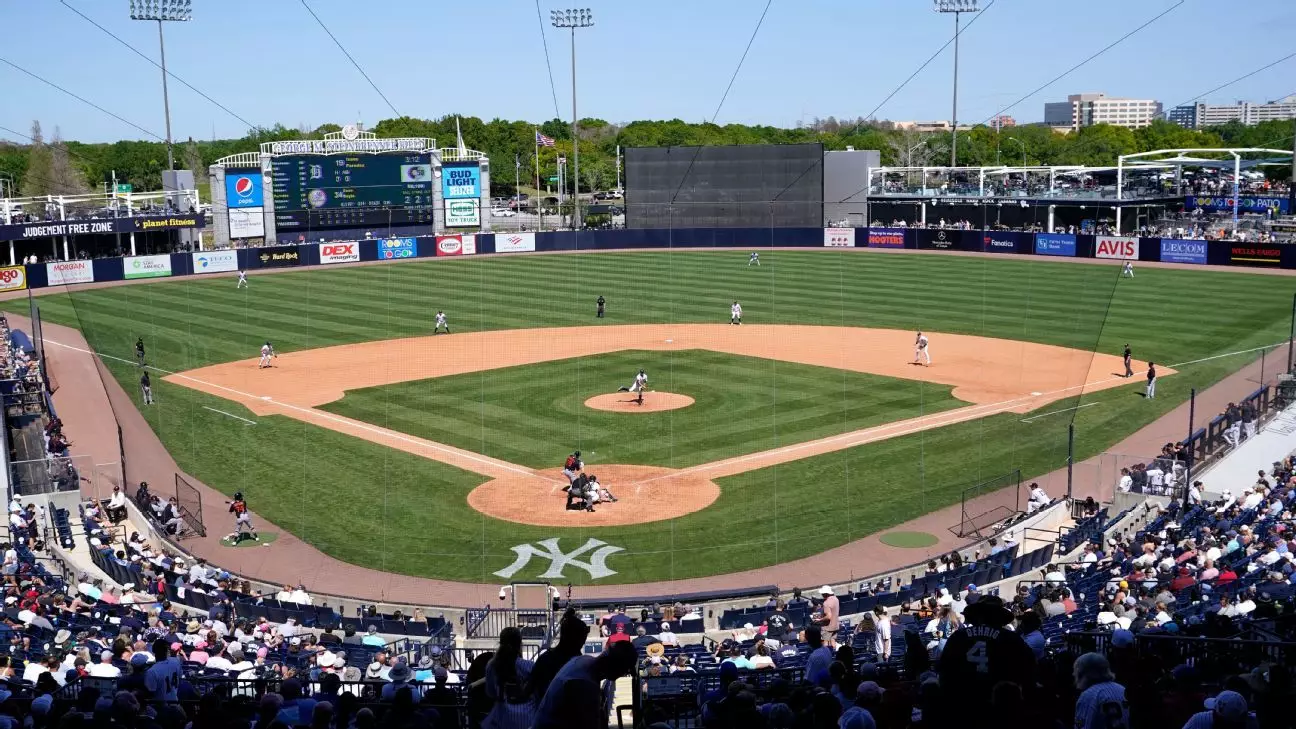The Tampa Bay Rays are on the brink of a unique chapter in their history as they prepare to host their 2025 home games at Steinbrenner Field, the New York Yankees’ spring training facility. This move comes in the wake of Hurricane Milton’s devastation to Tropicana Field, the Rays’ home since 1998, raising questions about the future of the dome that has become synonymous with the franchise. As the organization grapples with the impact of this displacement, there are both challenges and opportunities that lie ahead.
Stuart Sternberg, the principal owner of the Rays, emphasized the necessity of finding a suitable venue for the team and its fanbase. While Steinbrenner Field is the largest spring training site in Florida with a seating capacity of approximately 11,000, it presents a series of logistical challenges. Transforming a spring training facility into a major league stadium is no small feat. Auld, the Rays co-president, mentioned the urgency of preparing the venue for a major-league atmosphere while retaining the distinct identity of the Rays. This transformation may involve modifying the ballpark’s aesthetics, embracing branding elements while still reflecting the team’s values and character.
Moreover, the weather will be a significant factor unlike the controlled environment of Tropicana Field. The impending Florida summer brings the possibility of rain, heat, and humidity, which could influence game-day experiences for fans and players alike. Adapting to these conditions could be arduous for both the organization and the loyal fanbase that has supported the Rays throughout their history.
A key aspect of this unprecedented transition revolves around financial logistics. Under the new arrangement, the Yankees stand to benefit significantly, reportedly receiving around $15 million for hosting the Rays as they battle the aftermath of the hurricanes. Thankful for their collaboration, Sternberg commended Hal Steinbrenner for his unwavering support in facilitating this deal. While the financial benefits are crucial for both teams, it remains essential to consider how the Rays will manage their own resources in this uncharted territory.
Although the money for hosting the games will come from various external sources, proper allocation and budgeting will be necessary for the Rays to manage their operational costs while making the transition as smooth as possible. Sternberg’s assertion that this is a “heavy lift” underscores the stakes for both the Yankees and the Rays as they navigate this arrangement.
This stadium partnership inevitably alters the dynamics of the long-standing rivalry between the Rays and Yankees. Historically, competition and rivalry have driven each team’s successes, but the current situation has introduced a layer of cooperation that reflects a commitment to supporting the community and helping other teams rebound from disasters. The cooperation speaks volumes about the shared history of the two franchises in the Tampa Bay area, where many Yankees legends carved their legacies.
In light of recent events, Hal Steinbrenner noted that “in times like these, rivalry and competition take a back seat.” This statement highlights a new approach to sportsmanship where the well-being of the community takes precedence over traditional competitive streaks. The shared experience of overcoming the challenges instigated by recent hurricanes may even foster a sense of camaraderie between the two franchises.
As the Rays set their sights on the upcoming season, the implications extend beyond mere logistical adaptations; the team’s ability to innovate and rebuild could significantly affect their relationship with the community. The prospects of engaging local fans and businesses while utilizing school and community resources could serve to enrich the community’s overall experience and interest in baseball.
Moreover, as plans are set in motion for a newly proposed stadium in the Historic Gas Plant District by 2028, the construction can revitalize the area profoundly. The project aims not only to provide a modern venue for the Rays but also to respect and honor the historical significance of the land that once belonged to the Black community. This effort, intertwined with the current challenges faced by the team, creates a narrative steeped in resilience, unity, and forward-thinking.
The forthcoming season promises to be one of unexpected joy and daunting challenges for the Tampa Bay Rays. While hosting games at a rival’s spring training facility may initially seem like a setback, it offers unique opportunities for growth, community engagement, and long-term improvement. As fans adjust to this unexpected change, the organization must foster this thriving environment, ensuring that the love for baseball continues to resonate in every game played at Steinbrenner Field. The resilience and support of the Tampa Bay community will be critical in paving the way for the Rays’ future, both on and off the field.


Leave a Reply